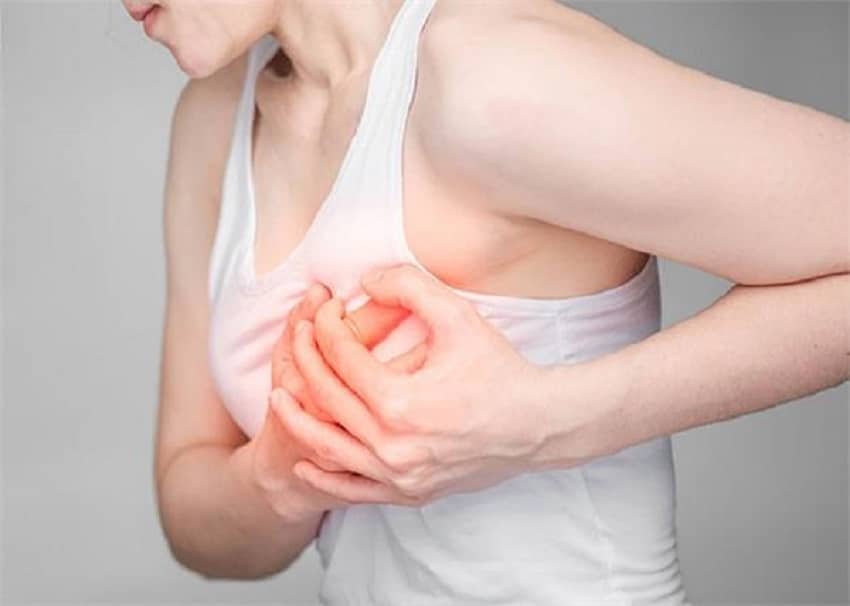Checking your breasts for skin dimpling
Throughout a breast self-exam, you need to search for alterations in the size and shape of the breasts or nipples. It’s also wise to sense of any protuberances within the breasts or beneath your armpits.
It’s important to concentrate on the look of the skin when you are performing self-exams. Alterations in thickness and also the skin tone over your breasts might be indications of cancer of the breast. Make certain you’re fully assessing the breast area.
If there’s skin dimpling, meaning your skin includes a texture much like an orange peel, maybe it’s a manifestation of cancer of the breast. This really is frequently connected with inflammatory cancer of the breast, an uncommon but aggressive type of the condition.
You will find benign explanations why your skin may look dimpled. If you see a big change, make sure to inform your physician so that you can work to discover why the modification has happened.
What can cause skin dimpling?
An ailment known as fat necrosis is unrelated to cancer of the breast and may also cause dimpled skin. Sometimes, fat within the breast may become broken and die.
This may lead to a lump that may be mistaken for any tumor. When the fat necrosis develops close to the surface, it might result in the surface of the skin look pitted or dimpled.
Fat necrosis isn’t a precursor to cancer, nevertheless its signs and symptoms still warrant evaluation. A needle biopsy from the lump might help confirm if it is cancerous or otherwise. Fat necrosis doesn’t raise the chance of cancer of the breast.
Dimpled skin is a very common manifestation of inflammatory cancer of the breast, which attracts its name from your inflamed appearance. This type of cancer leads to the blockage of lymph vessels within the skin.
These vessels transport lymph, a fluid that can help carry particles and excess fluid, from tissue through the body towards the blood stream. The lymph system will also support our body’s defense mechanisms.
Inflammatory cancer of the breast makes up about 1 to five percent of diagnoses of breast cancers within the U . s . States. This cancer has a tendency to develop within the cells from the milk ducts. Inflammatory cancer of the breast can also be more prone to come in women more youthful than 60.
Do you know the signs and symptoms of inflammatory cancer of the breast?
In case your skin dimpling is because inflammatory cancer of the breast, you might have the next signs and symptoms:
- The affected breast may swell and feel warm.
- The affected breast might be especially tender.
- You might feel discomfort within the affected breast.
- You might feel a burning sensation within the affected breast.
The affected region frequently covers about one-third from the breast in inflammatory cancer of the breast. This could vary with respect to the person. If you notice dimpled skin on breasts, it’s unlikely the cause is cancer.
Generally, if you see this transformation in texture somewhere or changes towards the color, you need to visit your physician. Changes to paint incorporate a reddish or darkened appearance.
The dimpled skin might also itch. You might or might not feel a tumor or lump beneath the skin.
What goes on next?
Sometimes, the signs and symptoms of inflammatory cancer of the breast can be mistaken with a breast infection known as mastitis. Mastitis is experienced by women too having a child who breastfeeds.
It’s much more likely the cause is inflammatory cancer of the breast if:
- your signs and symptoms linger after treatment with antibiotics
- your signs and symptoms worsen quickly
- you’re not breastfeeding
Inflammatory cancer of the breast can be challenging to identify. That’s since there frequently isn’t a lump to look at. Women with inflammatory cancer of the breast frequently have dense breasts, that make it hard to determine indications of cancer on the mammogram.
A breast biopsy is required to confirm detecting cancer. Other screening tests might be purchased additionally to some diagnostic mammogram.
These tests can include an ultrasound from the breast, a CT scan, along with a bone scan. It will help your physician see whether cancer has spread.
The takeaway
Like many breast cancers, the chances of survival improve dramatically if inflammatory cancer of the breast is diagnosed and treated early. Delays in diagnosing inflammatory cancer of the breast could be especially harmful since it can grow and spread so rapidly.
That is why it’s vital that you have regular breast exams and quickly inform your physician about any changes, for example skin dimpling.
You need to visit your physician if you are unsure things to model of an epidermis symptom or alternation in your breast. They are able to see whether the modification is benign or suggestive of cancer of the breast.
Find support from other people who live with cancer of the breast. Download Healthline’s free application here.

